
Haworthia emelyae var. comptoniana Photo by: Valentino Vallicelli
Standard form West of Willowmore, road to de Rust. (Photo taken during the winter rest.)
Origin and Habitat: South Africa (Georgida), in the Willowmore District.
Habitat: This plant comes from a very small area no larger than 10 by 15 metres in quartz patches and often grows under stones. It is very rare in the field and grows in very close association with Haworthia bayeriSN|13285]]SN|13285]].
Synonyms:
See all synonyms of Haworthia emelyae
Description: Haworthia emelyae var. comptonianaSN|13363]]SN|13358]] is a distinct variety most sought after for the flattened, entirely smooth leaf-ends, and is particularly attractive. The plants are bigger than in Haworthia emelyaeSN|13363]]SN|13363]] (the nearest relative), growing up to 120 mm in diameter in cultivation. Where H. emelyae is generally tinted purplish-brown, H. comptoniana is usually green.
Habit: Stemless rosette succulent, generally solitary, its growth is almost entirely subterranean, with only the leaves' apex exposed to the atmosphere at the soil level (see: geophyte plants)
Life span: They may not be very long-lived in nature with a life span of 15-20 years.
Rosette: These leaves form a stemless rosette, seldom proliferous, usually 5-9(-12) cm in diameter, with 15 to 20 leaves (plants in habitat are barely 3 cm across!).
Leaves: Broad triangular, (4-5 cm long and 2 cm wide at the base). The retuse leaf-end area is pellucid and reticulate with pale white-flecked "veins" running into lines that converge at the apex. The colour, reticulation and relative length of the leaves are quite variable some are pale coloured with little contrast between the reticulation and the background colour and translucence of the leaf. Other plants are darker coloured or with more conspicuous specks and marked reticulation, and they are are much more attractive.
Flower: 2-lipped white with greenish veins, borne on a 20 cm tall inflorescence.
Remarks: The diversity between Haworthia emelyaeSN|13358]]SN|13363]] and this variety is the smoothness and dimension of the plants, they are usually smoother and larger sized.
Notes: Contractile roots are found in many plants species mainly at the base of an underground organ (bulb, corm, succulent rosette, etc.) The contractile roots continually pull the plants deeper into the ground as the stem elongates so the it remain subterranean or at an appropriate level in the ground.. Contractile roots are usually broad, fleshy, vertical, tapering, wrinkled looking and very distinct of the rather cylindrical fine absorbent roots and are capable of incredible effort.
In most cases, contractile roots not only produce a strong pulling force on but also push away the substratum and create a soil channel in which plant movement is made easier. For example in Haworthia the fleshy contractile roots swell with moisture in the wet season creating a space in the substrate then - after the full drying out of soil during the dry season - a considerable parts of this roots die off leaving empty spaces in the substratum that allow plant movement with minimum or no resistance, at the same time the other roots dehydrates and shrinks vertically, drawing the plant down into the ground. This is repeated early permitting the top of the plant to remain constantly at the soil level.
Bibliography: Major references and further lectures
1) Urs Eggli “Illustrated Handbook of Succulent Plants: Monocotyledons” Springer, 01/gen/2001
2) M. B. Bayer “The new Haworthia handbook” National Botanic Gardens of South Africa, 1982
3) John Pilbeam “Haworthia and Astroloba: A Collector's Guide” 1983
4) Stuart Max Walters, James Cullen “The European Garden Flora: Pteridophyta, Gymnospermae, Angiospermae” Cambridge University Press, 1986
5) John Robert Brown "Unusual Plants:110 Spectacular Photographs of Succulents" Abbey Garden Press, 1954
6) Doreen Court “Succulent Flora of Southern Africa” Struik Nature, 2010
7) Bayer, MB “Haworthia Revisited: A revision of the genus” Umdaus Press, Hatfield. 1999
8) Hilton-Taylor, C.. “Red data list of southern African plants.” Strelitzia 4. South African National Botanical Institute, Pretoria. 1996
9) Bruce Bayer "Leaf sequence in Haworthia emelyae ‘comptoniana’ over a 20 month period" Posted on August 29, 2013, http://haworthiaupdates.org/category/emelyae/
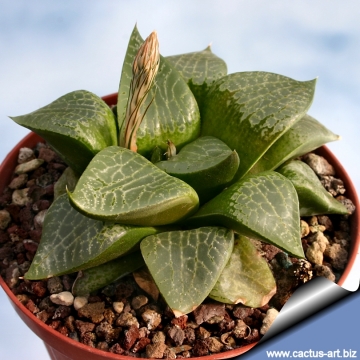 Haworthia emelyae var. comptoniana Photo by: Cactus Art
Haworthia emelyae var. comptoniana Photo by: Cactus Art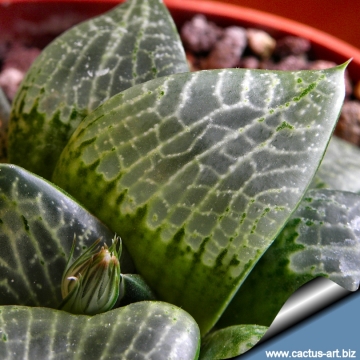 Haworthia emelyae var. comptoniana Photo by: Cactus Art
Haworthia emelyae var. comptoniana Photo by: Cactus Art The leaf tissues are translucent or even transparent Photo by: Cactus Art
The leaf tissues are translucent or even transparent Photo by: Cactus Art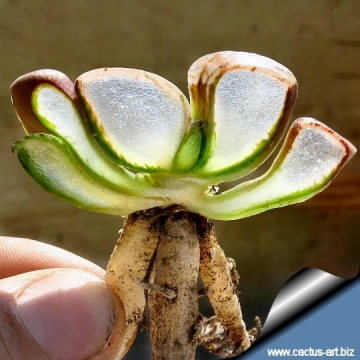 A longitudinal section showing the fenestrate leaves with the translucent tissues. Photo by: Cactus Art
A longitudinal section showing the fenestrate leaves with the translucent tissues. Photo by: Cactus Art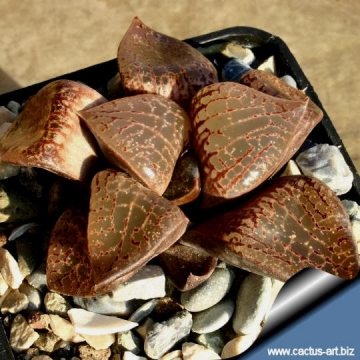 With a few hours of sun the green reticulated fenestration of this plant turn to a rich red-brown. Photo by: Cactus Art
With a few hours of sun the green reticulated fenestration of this plant turn to a rich red-brown. Photo by: Cactus Art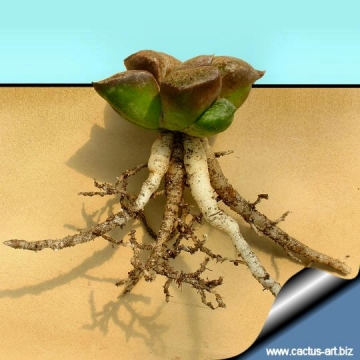 Contractile roots pull the plant deeper into the soil to protect the plant from sun and heat. Photo by: Cactus Art
Contractile roots pull the plant deeper into the soil to protect the plant from sun and heat. Photo by: Cactus Art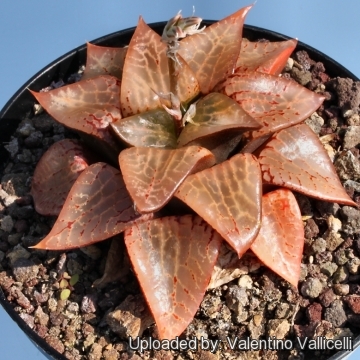 Haworthia emelyae var. comptoniana Photo by: Valentino Vallicelli
Haworthia emelyae var. comptoniana Photo by: Valentino Vallicelli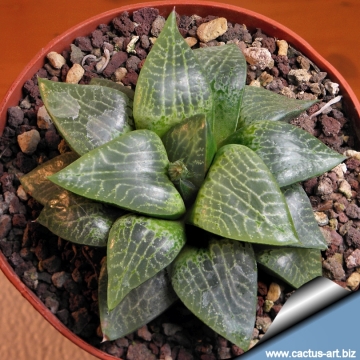 Haworthia emelyae var. comptoniana Photo by: Cactus Art
Haworthia emelyae var. comptoniana Photo by: Cactus ArtCultivation and Propagation: Easy to cultivate, it needs regular water.
Frost Tolerance: Light frost protection required. Minimum of 5º C for safe growing (but hardy up to -5°C.)
Sun Exposure: Requires light shade, up to bright light (protect from direct sun)
Propagation: Seeds, offsets, micropropagation.
Your Photos
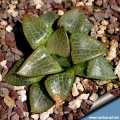
by Cactus Art
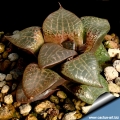
by Cactus Art
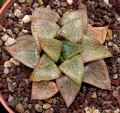
by Valentino Vallicelli





















